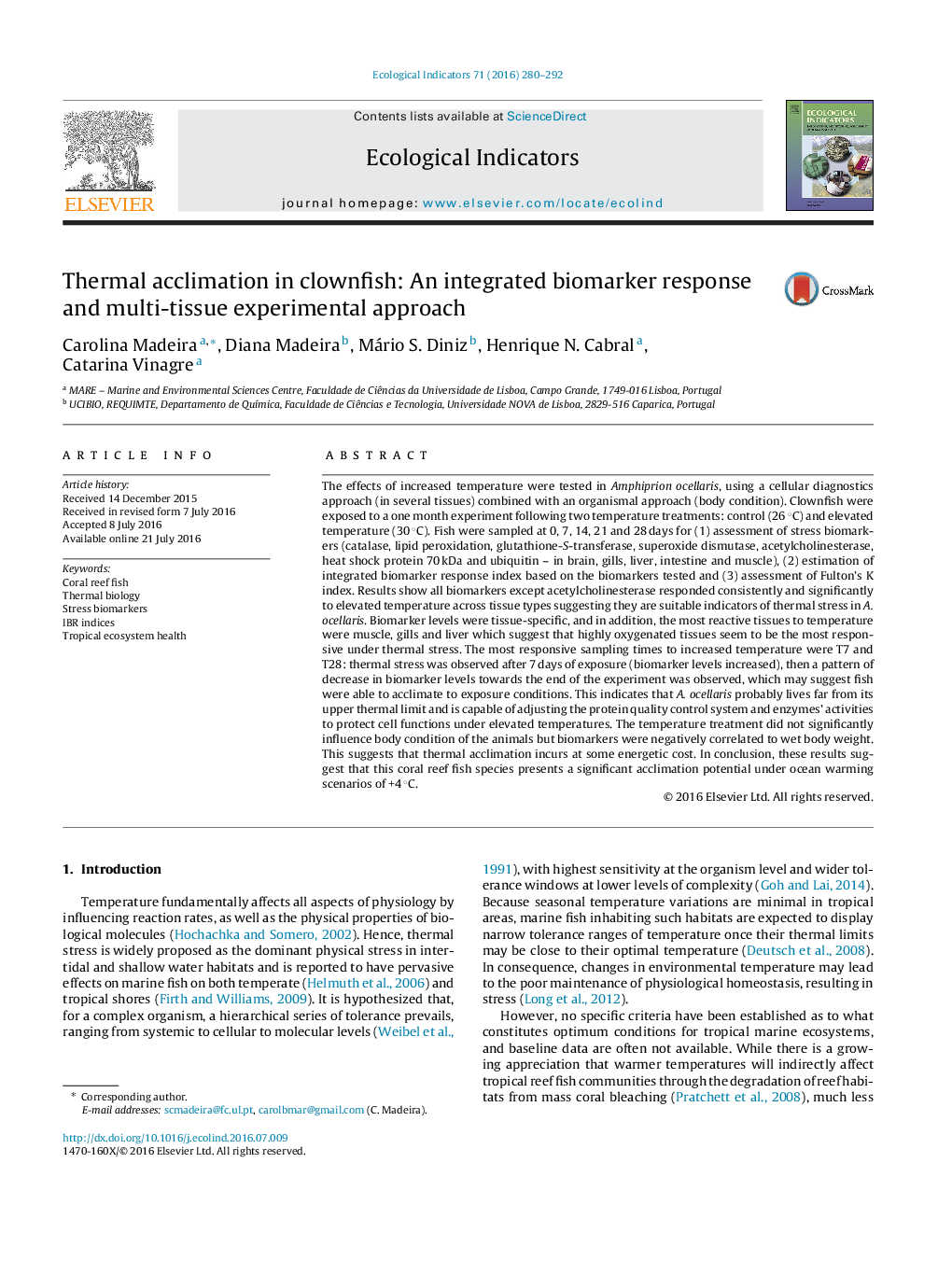| کد مقاله | کد نشریه | سال انتشار | مقاله انگلیسی | نسخه تمام متن |
|---|---|---|---|---|
| 6292948 | 1617131 | 2016 | 13 صفحه PDF | دانلود رایگان |
- Long term effects of elevated temperature were tested in ocellaris clownfish.
- Molecular biomarkers and body condition were assessed using integrated indices.
- The most reactive tissues to temperature were muscle, gills and liver.
- Thermal stress was observed after 7Â days, and after 28Â days organisms were acclimated.
- Thermal acclimation incurs with some energetic costs on body condition.
The effects of increased temperature were tested in Amphiprion ocellaris, using a cellular diagnostics approach (in several tissues) combined with an organismal approach (body condition). Clownfish were exposed to a one month experiment following two temperature treatments: control (26 °C) and elevated temperature (30 °C). Fish were sampled at 0, 7, 14, 21 and 28 days for (1) assessment of stress biomarkers (catalase, lipid peroxidation, glutathione-S-transferase, superoxide dismutase, acetylcholinesterase, heat shock protein 70 kDa and ubiquitin - in brain, gills, liver, intestine and muscle), (2) estimation of integrated biomarker response index based on the biomarkers tested and (3) assessment of Fulton's K index. Results show all biomarkers except acetylcholinesterase responded consistently and significantly to elevated temperature across tissue types suggesting they are suitable indicators of thermal stress in A. ocellaris. Biomarker levels were tissue-specific, and in addition, the most reactive tissues to temperature were muscle, gills and liver which suggest that highly oxygenated tissues seem to be the most responsive under thermal stress. The most responsive sampling times to increased temperature were T7 and T28: thermal stress was observed after 7 days of exposure (biomarker levels increased), then a pattern of decrease in biomarker levels towards the end of the experiment was observed, which may suggest fish were able to acclimate to exposure conditions. This indicates that A. ocellaris probably lives far from its upper thermal limit and is capable of adjusting the protein quality control system and enzymes' activities to protect cell functions under elevated temperatures. The temperature treatment did not significantly influence body condition of the animals but biomarkers were negatively correlated to wet body weight. This suggests that thermal acclimation incurs at some energetic cost. In conclusion, these results suggest that this coral reef fish species presents a significant acclimation potential under ocean warming scenarios of +4 °C.
273
Journal: Ecological Indicators - Volume 71, December 2016, Pages 280-292
